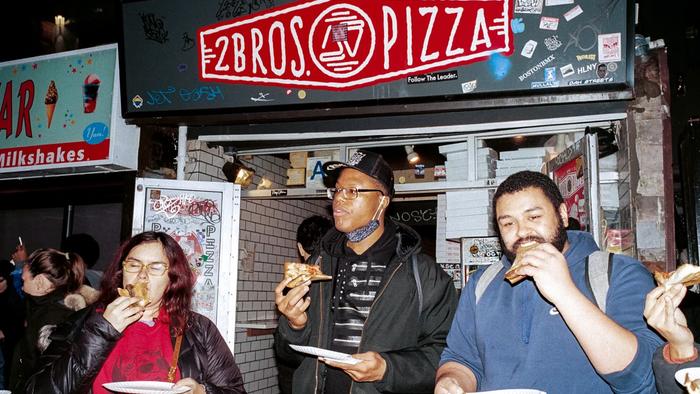The $1 Pizza Slice Is Rapidly Vanishing From Manhattan
Just like when Dollar Tree was forced to 'Break the Buck' by raising prices on some goods past the titular $1 mark, another "milestone" has been reached as inflationary pressures drive prices of everything - but especially food - higher.
The NY Times reported Tuesday that a growing number of Manhattan's $1 cheese pizza slice vendors. For many, that price has held for two decades due to the fiercely competitive nature of the Manhattan market, even where the economics have long since put a stop to $1 slices.
Because of its durability over the years, the dollar slice has - for some - become a symbol of the strangely egalitarian life of being a New Yorker, where billionaires, homeless men, students and construction workers are all thrown in together, and where almost everybody at times resorts to a cheap slice on the go.
The owner of the 2 Bros' chain, Mohammad Abdul, is now reportedly agonizing over whether to raise prices for the first time since opening in 2001. For those who are unfamiliar with 2 Bros', it's the biggest player in the $1 slice market, and its shops are visible across the borough. Interestingly, the city's dollar-slice culture really "took off" after the 2008 financial crisis.
The situation for the dollar-slice joints is further complicated by the fact that pizza-related businesses have been hugely successful during the pandemic. But the inflation situation has created problems in the lowest-cost vendors, some of whom have closed up shop.
As we reported, the pace of inflation was the fastest in November than it has been in decades, with the headline CPI number surpassing 6%. And restaurant prices in the New York area last month saw prices rise at the fastest rate since 1987.
The NYT goes on to explain that inflationary pressures have fallen especially hard on pizza vendors. A severe drought in parts of the US and Canada decimated wheat crops, driving up flour prices. And worker shortages at meat-processing plants led to higher prices for pepperoni. Pizzeria owners buying canned tomatoes from Italy or red chile flakes from India also face higher shipping costs, in many cases being passed on by wholesalers.
A surge in demand for packaging materials, plus a lapse in production from the winter freeze in Texas early this year, has also caused prices on packaging materials, napkins, paper plates and plastic cutlery to surge.
A winter freeze in Texas earlier this year curtailed the production of resin, a raw ingredient in plastic straws and packaging materials like shrink wrap. And in perhaps the biggest shortage of all for pizzerias, reliance on food delivery during the pandemic prompted a surge in demand and increased prices for pizza boxes, paper plates and takeout containers.
One point of relief is that prices for processed cheese, typically the biggest food cost for any pizzeria, have actually fallen. The average block cheese prices are down from last year’s unusually high peaks. Cheese prices have been for years propped up by government subsidies to help dairy producers. But the Department of Agriculture is already forecasting that prices will rise next year.
Because of the stable cheese prices, 2 Bros is still charging $1 for a cheese slice at six of its nine locations. But newer stores have raised prices to $1.50.
So far, these businesses have survived during the pandemic largely due to discounted rents from landlords.
Rents for residential properties have come roaring back already this year. Commercial rents (like those needed by $1 slice businesses) have been the hardest hit.
How much longer until these pressures finally make the $1 slice extinct?
Tyler Durden
Sun, 12/26/2021 - 20:00
http://dlvr.it/SG47Cr

No comments:
Post a Comment